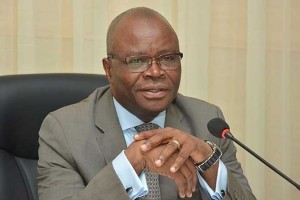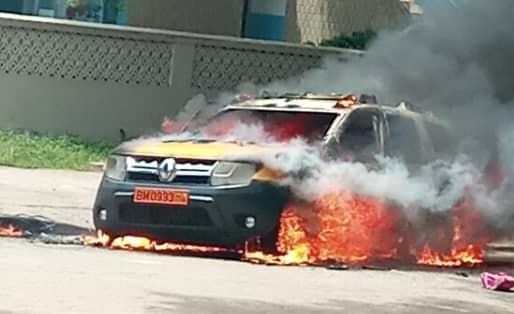Talon to walk on dead bodies to install his hand-picked legislators
BY JIBRIL TURE
On Wednesday, the day following the unprecedented post-election violence that shook Cotonou causing at least three deaths up to then, foreign affairs minister Aurelien Agbenonci convened a meeting with the diplomatic corp and attempted to downplay the violence. The minister told the foreign diplomats his country was not in a crisis. But the facts on the ground and the minister’s own subsequent words and actions speak to the contrary.
If, in the words of the minister, the country was not in a crisis, why then did he fly to Brazzaville, in the Congo (3,180 kilometers away) the next day along with his colleague in charge of security and delivered a letter from President Talon to the Congolese president, Sassou Nguesso, “to request President Sassou’s wise advice […] to resolve this situation?”

“We had an electoral process in which the opposition parties did not want to observe the rules that they themselves voted in the parliament.”
A far cry from what really happened, the outright exclusion of the entire collective of opposition parties.
Also: President Talon throws Benin’s democracy under the bus
The death toll so far is five according to government’s source, and nine according to opposition’s source. These numbers are low when compared to the casualties in similar uprisings in other African countries. But the mayhem around former President Yayi Boni’s residence on 1 May, and near the main stadium and other parts of Cotonou that resulted in loss of lives and destruction of property was nothing short of an uprising that built on the large-scale violence that disturbed the election held on 28 April. The next day, Thursday, the security forces once again faced demonstrators, again near the resident of former President Yayi that they fear could be arrested by the police anytime. That confrontation, with police chasing demonstrators with water cannon, shooting with rubber bullets and real bullets–causing two deaths–added to the crisis. Not to mention the heavy military presence across Cotonou that makes the residents feel like being in a war zone.
Also: A sad day for Benin’s often-praised democracy
According government’s sources, the vote could not take place in 39 administrative localities in the northern region due to the violence. In the south where there was absolutely no violence, the citizens boycotted the vote by staying at home, which caused the turnout rate to be very low, raging between 6 and 10 percent according to the opposition—a claim backed by independent sources.
Also: Beninese fear their democracy may soon be under attack
Yet, the Independent National Electoral Commission came up first with a 22% turnout (which the opposition and some independent observers found laughable), only to hike it to 27%, obviously in search of legitimacy to usher in the parliament Talon needs to finally reach the objective he has so far missed twice in a row: to amend the constitution.



